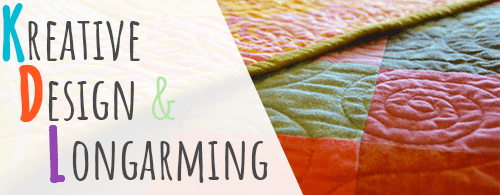What you need to know before you bring or mail your project to me for longarm quilting.
I have an Innova Autopilot Mach 3 computerized system. I am able to quilt a Topper that is 116” or less.
How to figure a cost estimation for your quilt? Take width x length = square inches
Example: if your quilt is 60″ wide and 60″ long that means you multiply 60×60 to get 3,600
Then multiple 3,600 x the price above to get your estimate for quilting. (3,600x $.02 = $72)
Batting:
I can stock large rolls of Dream Green, Dream Blend and Dream Cotton, or you may send your own batting if you prefer, but please remember your batting must be at least 4 inches larger on all four sides.
*You may request a specific batting and I will do my best to have it in stock for you, but you will need to request this in advance.
Trimming:
I’m happy to trim quilts after quilting, just let me know 🙂
Binding:
- Binding A = can be applied to the top and hand stitched to the back ($.25 per linear inch)
- Binding B = can be applied to the back and machine stitched to the back ($.20 per linear inch)
- Partial Binding = can be applied to the top only; Customer will finish ($.10 per linear inch)
Example: Linear inches are figures by adding all four sides together (60+60+60+60 = 240 x $.30 or $.15)
Mailing your Quilt?
Give me a call, shoot me a text or email letting me know you are sending me your project to be quilted. This also gives me a chance to start our communication about what your looking for.
Postage:
Postage is the responsibility of the client. We recommend sending your quilts via the US Postal Service using the flat rate boxes, these include tracking and insurance in the cost of the box.
Quick reminders:
- Press the quilt top and backing. If your backing will have a seam, try to place the seam horizontally across the width of the quilt for best results.
- Please trim all loose threads from the quilt top, on both sides. Dark threads will show through white fabric if not trimmed prior to quilting.
- Mark the top of the quilt and backing with a note secured by a safety pin
- Backing must be at least 4″ larger than the quilt top on all sides.
- The backing for the quilt must be square. It cannot be properly loaded if it’s not square.
